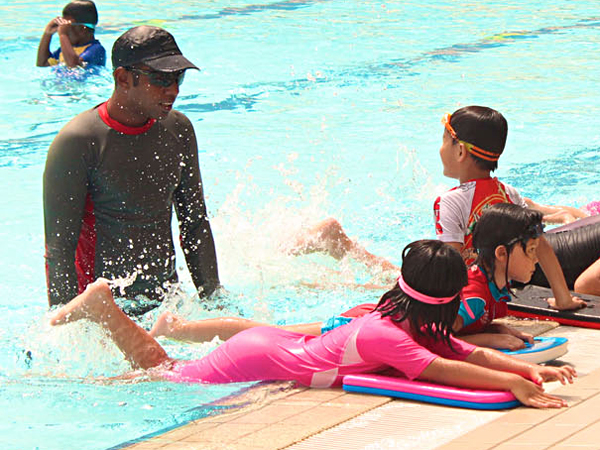What are some alternative exercises I can do in the swimming pool?

File Photo Credit: SportSG
By Malcolm Baey
SWIMMING TRAINING TIPS (1): ALTERNATIVE POOL EXERCISES
Apart from the usual practice of swimming laps to and fro, there are many alternative forms of exercises you can do in the swimming pool. They can help you get a better sense of movement in the water, develop your swimming ability further and ultimately also help you swim faster.
Focusing on practicing the correct butterfly leg movement using the pool's ledge as support.
Here are 7 simple exercises you can do at your own leisure.
1. Jogging in place
Similar to jogging on the spot on land, jogging in place in the water is a good way to start out exercising in the pool. Water is far denser than air so every movement you make will require more strength due to the higher resistance you face.
2. Water walking
Walking in the water is a water aerobics exercise that is performed at the shallow end of a pool. Stand upright and keep your back straight as you lift your knees as high as you can while walking forward. Make sure to tighten your abdominal muscles as your knee is raised.
3. Kicking at the side of the pool
This is a great way to focus on your kick without having to worry about your hand movements and body position in the water. Lie on the side of the pool on your torso with your legs in the water and kick away!
4. The Back Float
Lying in a supine position face up, push your chest outwards and lift your chin up. Try to hold this position for as long as possible. This helps you get a sense of floating in the water and can help improve your body positioning when swimming.
5. The Front Float
Lying in a prone position with your face down, exhale gently and try to stay in this position for as long as possible.
6. Treading water
This is a swimming technique that involves the movement of your hands and legs in a steady propulsion that keeps your head above the water. Go to the deep end of the pool where your feet cannot reach the bottom and thread water without stopping for one minute.
Try to keep your head above the water at all times, although it is okay for it to dip lower during the first few times. You may repeat this cycle up to five times and increase the repetitions as you get more comfortable with it.
7. Sculling
Although similar to threading water, sculling is distinctly different as it involves back-and-forth movement of the hand and forearms without the use of legs. This means that more effort must be used with the hands and it is a good way to work out your upper body muscles.
As you get more comfortable with this technique, you can try moving side to side and forward and backwards whilst sculling for a more intensive exercise.
To receive the latest updates on the happenings in the Singapore sports scene, or to find out more about some of the latest programmes on offer at ActiveSG, like our Facebook page here.





![ActiveSG Academies and Clubs Logo (Solid Colour)[8647]](https://www.activesgcircle.gov.sg/hs-fs/hubfs/ActiveSG%20Circle%202023Theme/images/ActiveSG%20Academies%20and%20Clubs%20Logo%20(Solid%20Colour)%5B8647%5D.png?width=150&height=65&name=ActiveSG%20Academies%20and%20Clubs%20Logo%20(Solid%20Colour)%5B8647%5D.png)



-01.png?width=200&height=141&name=Team%20Singapore%20Logo%20(Red)-01.png)



